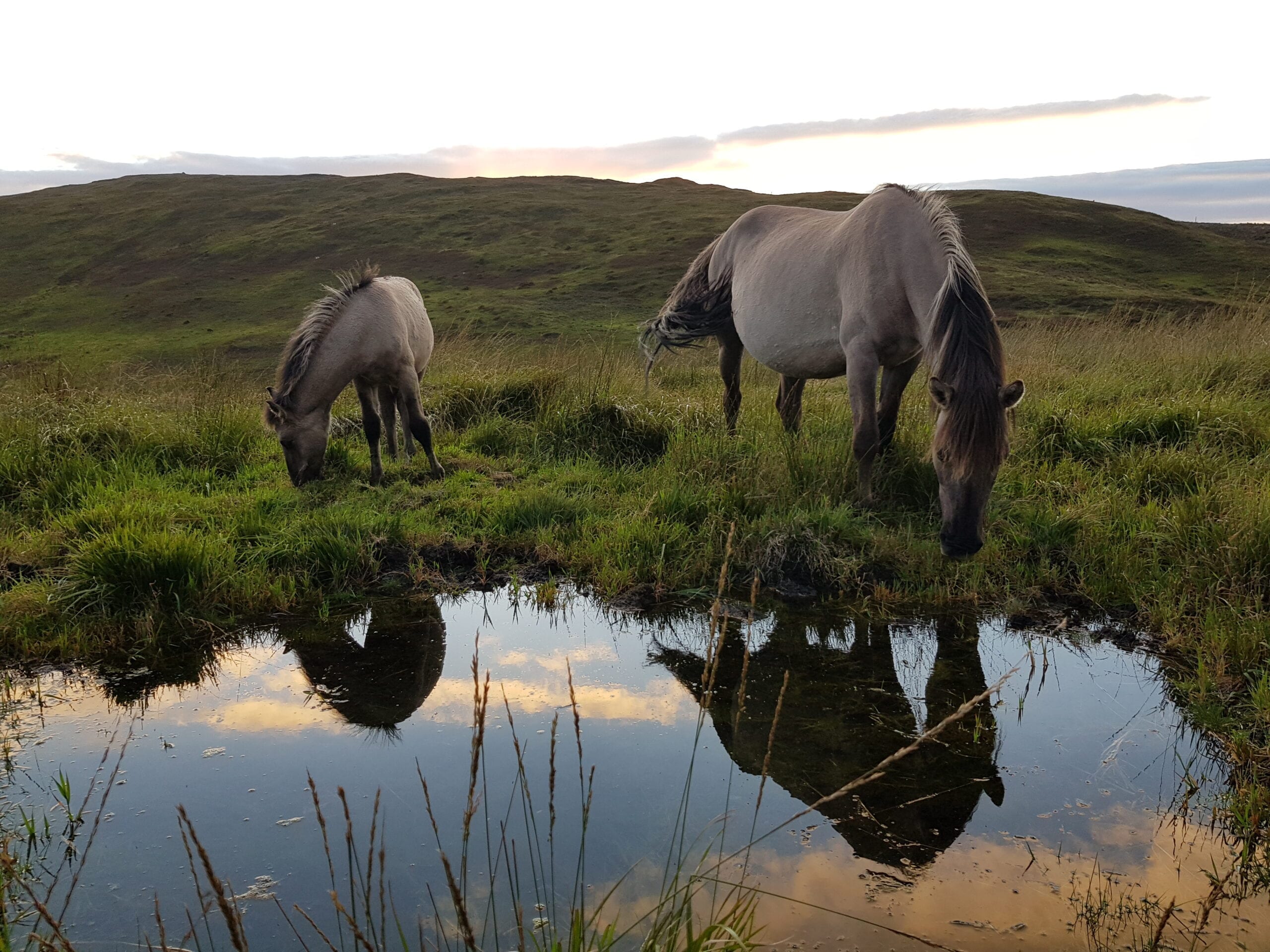Wild Horse
Ceffyl Gwyllt. Equus ferus
All horses (Equus ferus) are descended from the primitive wild horse – sometimes known as the tarpan – that populated Europe and Asia, and is a native species of Britain. However, there is some variation between different domestic breeds – the breeds most closely matching the wild horse are Konik (from Europe), Przewalski (from the Asian steppes) and Sorraia (from the Iberian Peninsular). These breeds show a dun colouration, a black dorsal stripe, horizontal striping on the legs and structural features characteristic of the wild horse. Only Przewalski has retained the upright mane. Koniks are generally coloured grullo or ‘blue dun’.
Along with these features, the Konik is extremely hardy and can thrive on tough vegetation, making it highly suited to living as a wild herd and well matched to the conditions and their role in our project. It is also able to graze purple moor grass (Molinia caerulea), which covers most of the site. The Konik is very efficient at storing fat reserves in periods of abundance of food, to enable it to see through the winter, and is known for its sturdy health and longevity. In addition, Koniks do not require hoof trimming as they shed excess growth naturally.
For further information about the Konik, see the paper Polish Konik Horses – Characteristics and Historical Background of Native Descendents of Tarpan
Status at Cambrian Wildwood: Small herd of Konik horses present.

